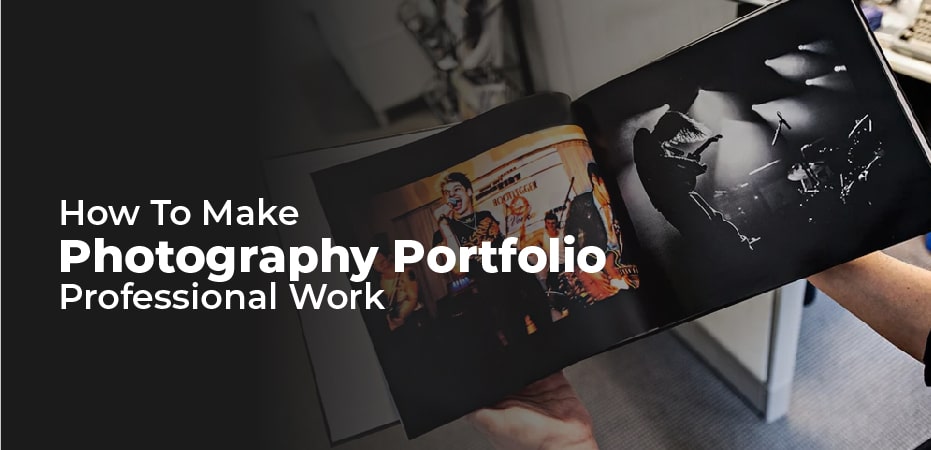Table of Contents
Having a photography portfolio is one of the first steps to becoming a successful photographer. A portfolio helps you show off your best work to potential clients and helps others see your skills and value as an artist. You should consider including a portfolio in your work gear as even the photography portfolio most successful people in the industry keep their portfolios updated with their most recent work.
Our brief step-by-step guide (and bonus tips!) can help you build a photography portfolio that you can be proud of.
Making a Photography Portfolio – Follow 5 Easy Steps
A good portfolio doesn’t need to be created until you’ve reached certain milestones in your career. There is no need to wait. To be honest, it’s exactly what you need to be able to become a photographer. Here’s what you need to do:
Take More Pictures
In order to create a great portfolio, you’ll need as many (good) photos as possible. Beginner photographers aren’t likely to get paid gigs yet, but that’s fine. If possible, do free or cheap shoots for people you know until you have enough photos to begin your portfolio. The more photos (and better ones) you upload, the more clients will be interested.
Portfolio Design & Specialization
Consider how you want your portfolio to look before you select your images. Is it going to be a collage or just one image per page? Do you plan on arranging the photos in a certain order? Furthermore, you’ll also want to specialize your portfolio so that it appeals to a particular market. Build separate portfolios for wedding photography, event photography, newborn, and maternity portraits, and other niche categories. This will allow you to specialize in certain areas of photography.
Feature Your Images Carefully
Here is where the fun begins! This is where you select the images you want to be featured in your portfolio. It is important to keep in mind that this is likely to be the most time-consuming step. You may want to take your time here. Be sure not to use too many photos that are too similar to one another. This may convey that you’re a lazy photographer. You shouldn’t include subsequent shots with just subtle changes in the body’s position and the lighting when you’re taking photos of people. Your creativity as a photographer should be evident by the differences between the two photos.
Take Into Account the Order of Images
When placing your photos in order, here’s one thing you should keep in mind: Clients will not always finish looking through your entire portfolio, so you will want your first photo to be of the highest standard. On the other hand, there are also clients who are looking for versatile photographers, which is why you will also want your final image to be excellent. By mixing your favorites in the middle, and bookending them with remarkable images, you can maintain momentum.
Print High-Quality Documents
The key to creating a striking portfolio is to ensure that all of the prints you submit are of the highest quality. If you want to print your images, you should start by making sure your image files are of a very high resolution. Pixels are important when it comes to printing. In order to ensure that you get accurate and high-quality colored prints, you should find a photo printing shop that specializes in producing such prints. It is important to have a reliable, professional photo printer if you intend to print them yourself.
Creating a Strong Photography Portfolio – 5 Basic Tips
Anyone can create a photo portfolio, but only a few will make an impression. Here are some tips for making your portfolio look professional and worth checking out.
Trim The Fat
The portfolio should give a glimpse of your artistic style and abilities as a photographer. You’re not supposed to show all of your photos, but rather just a few that really speak to your audience. In some of your images, you may find something off, so don’t include them. In a blog or online gallery, you can always showcase your other favorites.
Make An Impact with Your Images
Don’t include a photograph in your portfolio if you have to explain why it’s great. If the results don’t impress your potential clients, it won’t matter whether you braved storms just to get an amazing picture. You want your pictures to be as memorable as your company. Even though you can always share your more challenging photos, later on, keeping them out of your personal portfolio will help you keep your portfolio strong and reduce the number of pages in your portfolio.
Consider Another Opinion
You could also enroll in a portfolio critique if you’re having difficulty letting go of images. Tell them what you think and what you feel about the image. As a result, you can gain a better understanding of whether or not your images deserve to be included in your portfolio by seeing them from others’ perspectives.
Consider Your Audience
When it comes to deciding on the design and content of your portfolio, your target audience is crucial. Think about who is going to see your portfolio. What do they need? Choose images that you believe your audience will be willing to pay for. This is true also for your website design.
Maintain A Simple Design.
The purpose of your portfolio is to showcase your best work. It’s not necessary to use flashy paper, long captions (if any), or other elements that may distract from your work. Let your photos speak for you and make them the centerpiece of your portfolio. When you choose the right images to feature and keep building your portfolio along the way, you can rest assured that they will represent you well to your market.

